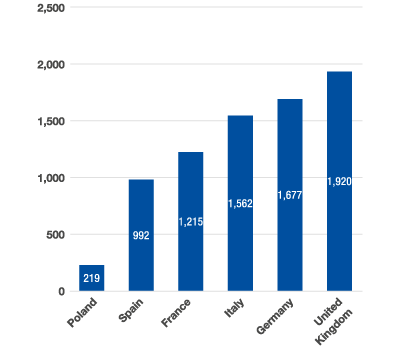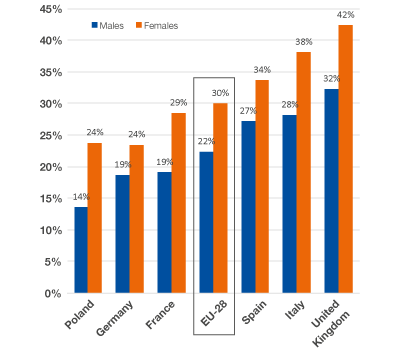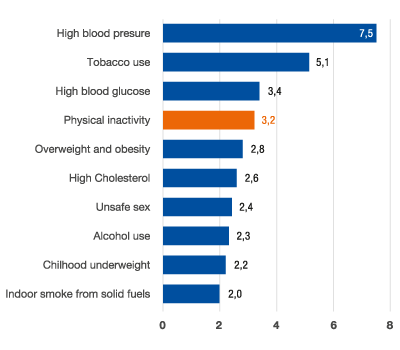Inactivity Time Bomb
Inactivity time bomb is a report about the economic costs of physical inactivity in Europe.
Download Full Report
Inactivity Time Bomb
ISCA has commissioned Centre for Economics and Business Research (CEBR) to conduct a study of the economic costs of physical inactivity in Europe, focusing on six key countries (UK, France, Italy, Germany, Poland and Spain). The complete study results were presented on 17.06.2015 in Brussels through a Cafe Crossfire debate.
Within a few decades, physical inactivity has become one of the leading risks to European citizens' well-being and a growing challenge for European economies. But despite increasing evidence of dramatic health and economic costs associated with physical inactivity, we still lack sufficient initiatives to reverse this negative trend.
WE HAVE STOPPED MOVING
Two thirds of the adult population in Europe does not reach recommended levels of physical activity.
A quarter of European adults are insufficiently active
Despite all of the well-established health benefits linked to activity, a large proportion of the world's population remains physically inactive. Measured against the WHO guidelines, a quarter (26%) of adults across Europe are insufficiently active (WHO 2010).
Of the six focus countries examined, the UK sees the highest prevalence of physical inactivity, with 37% of the adult population categorised as being insufficiently active.
 Source: Lee et al., WHO, OECD, Eurostat, IDA, EUCAN, Cebr analysis
Note: The indirect cost in the chart above refer to those resulting from physical disorders only.
Source: Lee et al., WHO, OECD, Eurostat, IDA, EUCAN, Cebr analysis
Note: The indirect cost in the chart above refer to those resulting from physical disorders only.
The direct cost of treating inactivity-related disorders is over €9 billion per year
The direct costs presented opposite comprise the total (public and private) health expenditure upon the four major NCDs considered in this study, which can be attributed to physical inactivity. This calculation seeks to understand what societal resources are devoted to treating activity-related disorders. Total direct costs for the six focus countries presented here reached €7.6 billion in 2012, with the direct costs to the EU-28 estimated at €9.2 billion.
Physical inactivity is the 4th leading risk factor for global mortality
The impact of insufficiently-active lifestyles can be seen through comparing inactivity's role in global mortality with those of other risk factors. As illustrated in the chart opposite, physical inactivity has been identified as the fourth leading risk factor for global mortality. A 2009 study by the WHO estimated that physical inactivity accounted for roughly 6% of global deaths in 2004 - equal to around 3.2 million deaths in that year.
NowWeMOVE Inactivity Time Bomb
The 80 bn euro cost of physical inactivity in Europe is equivalent to what the entire world spends on cancer drugs each year!

Inactivity Time Bomb & NowWeMOVE
Inactivity Time Bomb plays a key part in NowWeMOVE campaign
NowWeMOVE's overall objectives are to raise awareness of the benefits of sport and physical activity among European citizens; promote opportunities to be active in sport and physical activity; and enable sustainable and innovative capacity building for providers of physical activity initiatives through open-source solutions and advocacy.
Connect
Subscribe to ISCA newsletter for regular updates on our events, activities and opportunities in our network
You can unsubscribe at any time.












